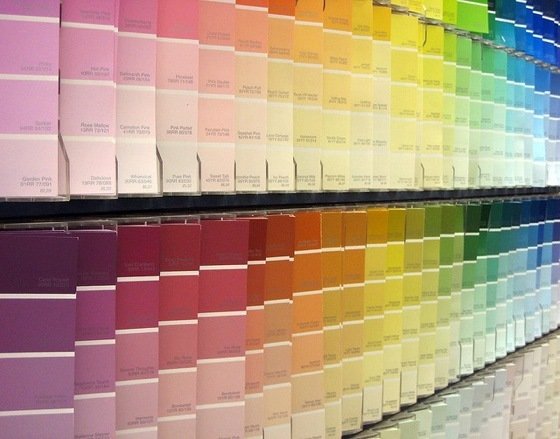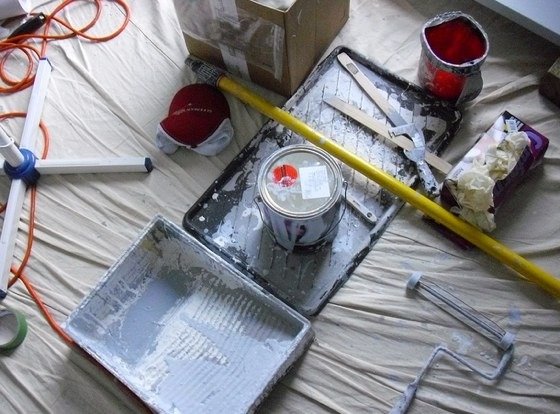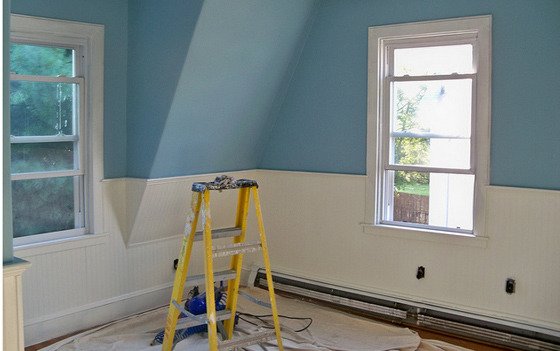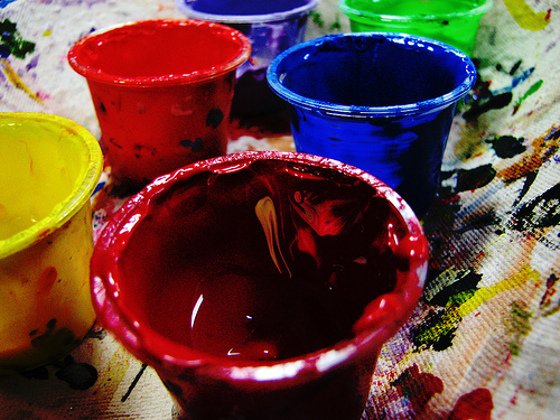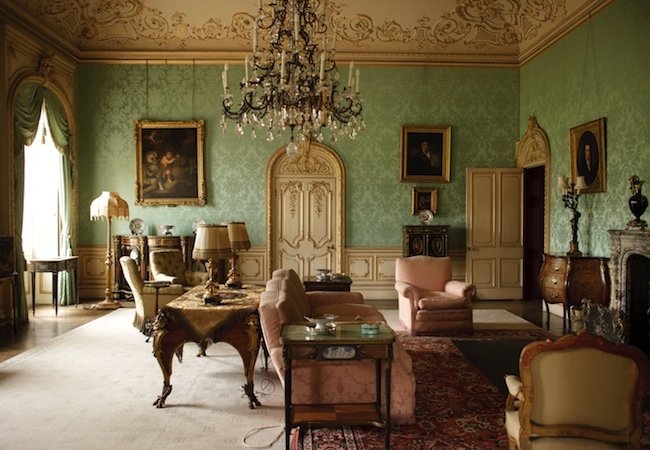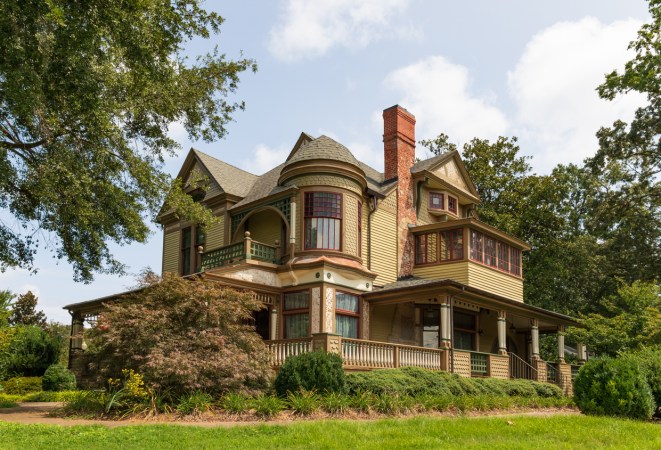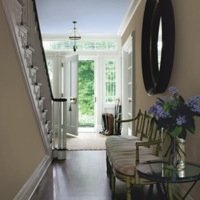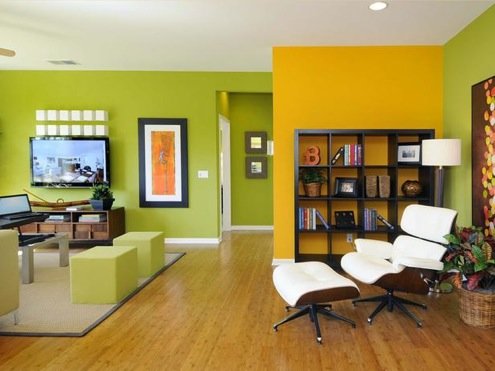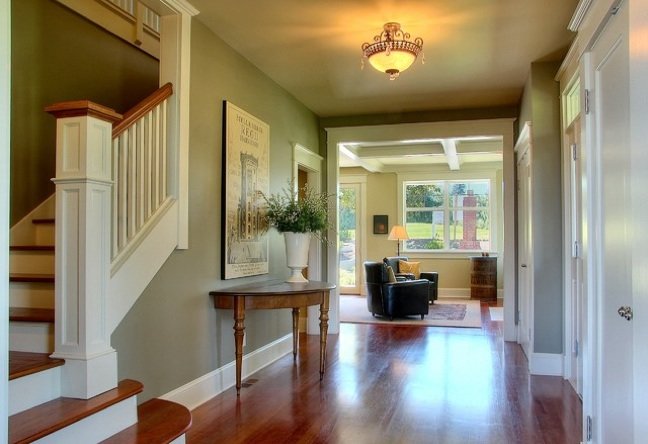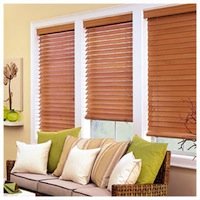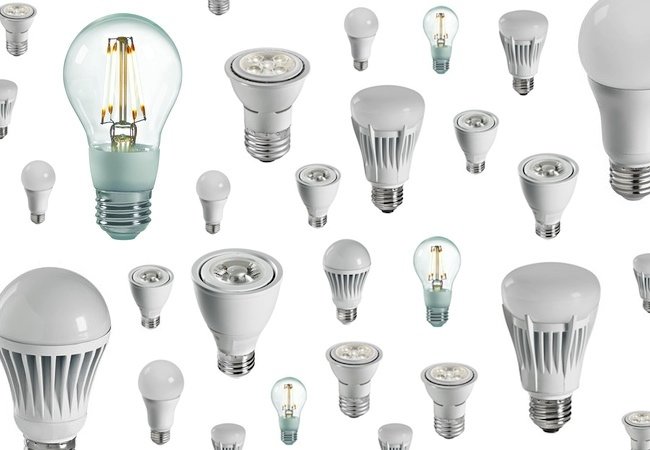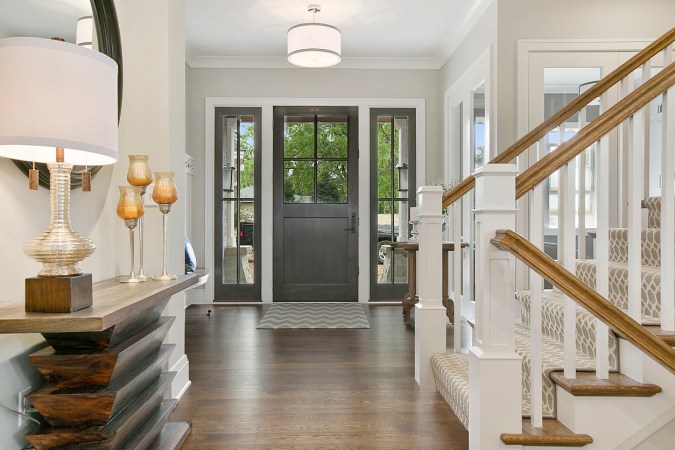We may earn revenue from the products available on this page and participate in affiliate programs. Learn More ›
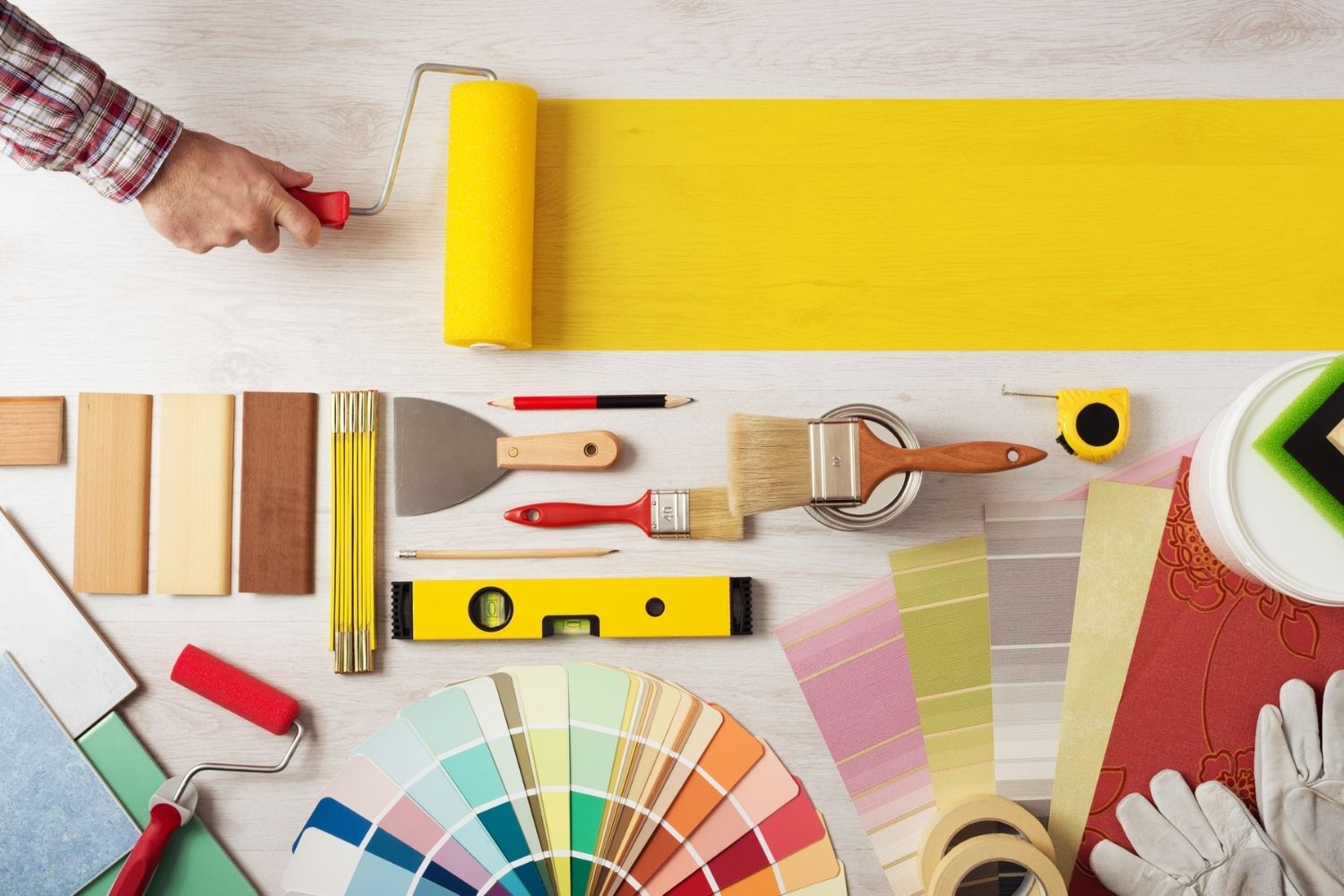
Paint is the easiest and most economical way to update a room’s look. Selecting the right paint color or colors is a big part of the process.
Start by examining the room. Consider the amount and type of light it gets, any architectural features to be highlighted, and areas to be downplayed. Consider the color of the floor and the color of the window coverings if they will stay in the room. Then determine your goal for the room—whether you want to make it appear lighter, larger, smaller, cozier, or taller.
Downplay Shortcomings
Paint color can help you open up rooms that appear small and dark or have low ceilings. Using shades of white or yellow provides an expansive, airy look. Large rooms that seem sterile and lack a cozy feel may benefit from shades of brown or dark blue.
Widen narrow halls with light colors. Give a different perspective to a long, narrow room by painting the shorter walls a darker shade. Help a boring room by giving one wall an accent color, possibly picking up a color in the floor or window coverings.
Some homes have a floor layout that is choppy with many little rooms. You can give some unity to the layout by using the same neutral color or shades of that color on all walls.
Highlight Positive Features
If the room has attractive molding, showcase it. Paint the wall a color that is lighter or darker than the molding.
A house might have a great-looking fireplace, a prized piece of art, or a wonderful piece of quality furniture that can become the focal point of a room. Look for a color that will work with the colors or color family of that favorite object. Also consider whether a complementary or contrasting color might give the best effect.
If the plan is to remake the entire room, coordinate the paint colors when selecting the floor and window coverings and upholstery fabric. Bring samples to the paint dealer to ensure a good match.
Choosing Color
Several factors figure into color selection. Personal preference, or colors a person feels comfortable with, is one of the biggest factors in color selection. Color can reflect a person’s cultural heritage or traditions. Blue, for example, signifies stability in one culture, trouble in another.
Research shows that people react to color, with blue, blue-green, green, red-purple, purple, and purple-blue evoking pleasant feelings among participants, and yellow and green-yellow being least pleasant.
Colors also set moods that play a role in color choice. Warm oranges and reds may stimulate appetites, while cool greens and blues can appear calming. Orange-yellows seem welcoming. Color choices also offer cooler reds and warmer blues that cross traditional color-wheel boundaries.
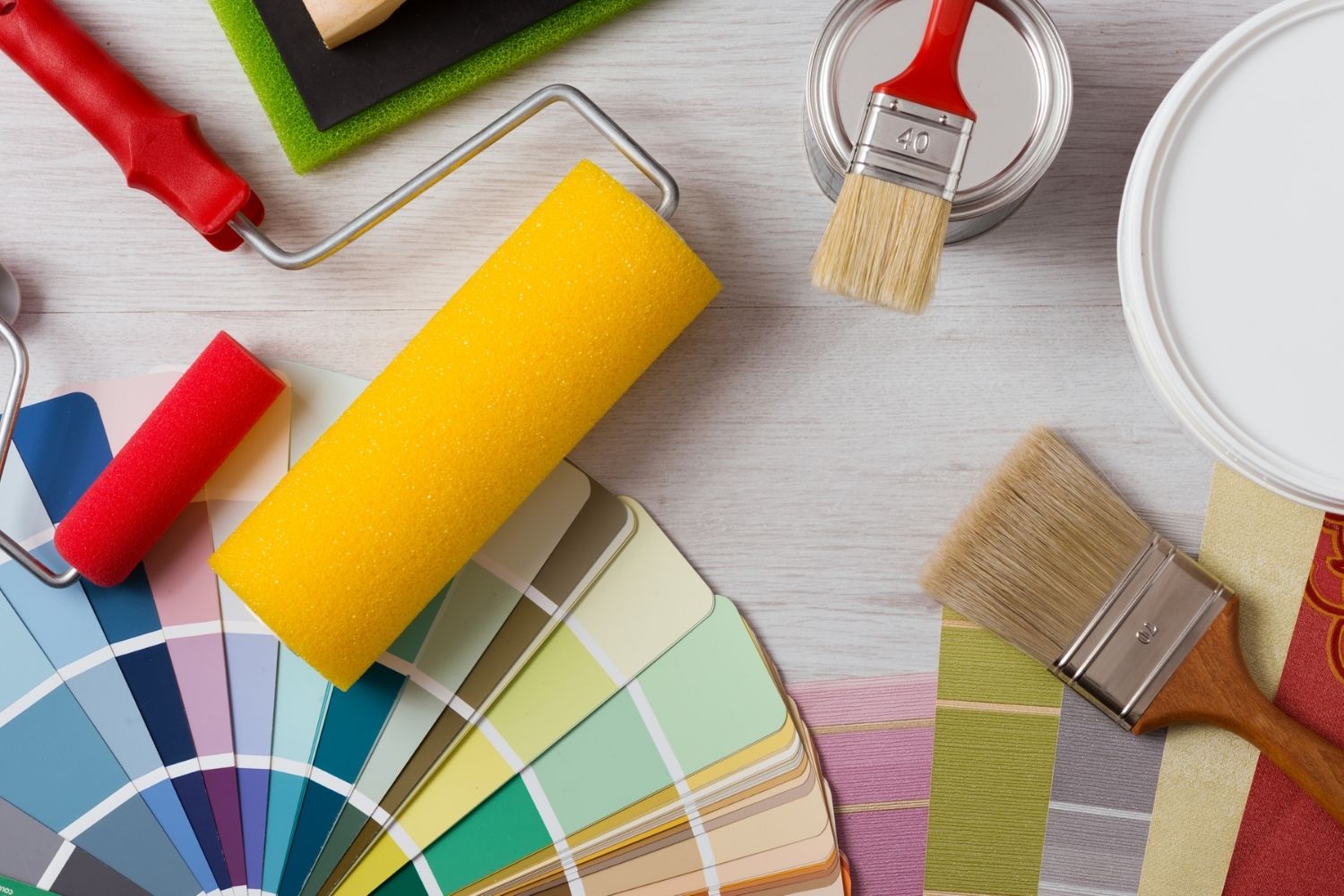
Light Affects Color
Remember that colors look different throughout the day and in different light. A paint color that looked perfect in the store may seem drab or garish under natural or artificial light at home.
When comparing colors, cover up the other colors on a sample sheet or card so that they don’t influence how you view each color.
When selecting paint colors, bring home color swatches and put them on each wall. Some paint manufacturers also produce sample paints. These small containers of paint allow customers to paint small sections on the wall to test the color.
Check how the paint or swatches look at different times of the day and evening over the course of a few days. Colors used in rooms that receive more northern light may appear darker while colors in rooms with more southern exposure can appear lighter and brighter.
Turn on the artificial light to be used in the room. Incandescent lights give a yellowish cast; fluorescents add blue hints; and halogens give off nearly white light. Each affects how the paint color appears.
Once you make a color selection, buy all of the paint required for the project to keep the color consistent. Write the batch numbers on the lids in case you need more at a later date.
